What's New
Displaying results 1801 - 1810 of 4914

Resource | Presentations,
The WHO Global Ministerial Conference “Ending TB in the Sustainable Development Era: A Multisectoral Response” aims to accelerate country implementation of the WHO End TB Strategy in order to reach the End TB targets set by the World Health Assembly and the United Nations (UN) Sustainable Development Goals (SDGs). The Ministerial Conference will inform the UN General Assembly High-Level Meeting on TB in 2018.
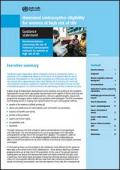
Resource | Publications,
The World Health Organization (WHO) convened a technical consultation during 1–2 December 2016 to review new evidence on the risk of HIV acquisition with the use of hormonal contraception (1). The issue was recognized as a critical one, particularly for sub-Saharan Africa, where women have a high lifetime risk of acquiring HIV, hormonal contraceptives constitute a significant component of the contraceptive method mix and unintended pregnancy is a common threat to the well-being and lives of women and girls.
Through consensus, the GDG arrived at new recommendations for progestogen-only injectables. The recommendations for use of progestogen-only injectables among women at high risk of HIV changed from category 1 to category 2, with an accompanying clarification, in the Medical eligibility criteria for contraceptive use (MEC) (1). Recommendations for all other methods of hormonal contraception remained unchanged.

Resource | Publications,
When women lead, change happens. Results follow.
The AIDS response has been led by women. When there was no treatment available, women were at the forefront of providing care for people living with and affected by HIV. Grandmothers looked after orphans. Elder sisters looked after their younger siblings. Women fought for access to treatment and mobilized.
Today, we are at the cusp of eliminating new HIV infections among children—a movement led by women. More women are accessing antiretroviral therapy than men, transferring the benefits of their good health to their families and economies. When young women are empowered and have their rights fulfilled, HIV prevalence falls, there are fewer unintended pregnancies, fewer maternal deaths and fewer dropouts from school and more women join the workforce. When young women have access to education, health outcomes dramatically improve.
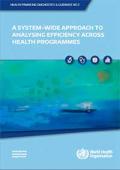
Resource | Publications,
Health programmes are able to target health interventions for specific diseases or populations, and historically, countries have relied heavily on them to deliver priority services. In low and middle income countries, this organizational approach has been reinforced by donor assistance for priority areas that often leads programmes to operate largely autonomously from one another in seeking to optimize the achievement of a specific objective. This dynamic has implications for how priority interventions are delivered and sustained, sometimes with separate organizational arrangements resulting in inefficient overlaps and duplications. As contexts change, and in particular, as responsibility for funding these programmes shifts more towards domestic resources, maintaining an array of programmes with distinct, separate organizational arrangements is unlikely to be affordable.
This paper presents an approach to conceptualizing and addressing inefficiencies arising from the way that health programmes operate within the context of the overall health system.

Resource | Publications,
This book represents a collaboration between the International Association of Schools of Social Work (IASSW) and the Joint United Nations Programme on HIV/AIDS (UNAIDS). IASSW is an association of institutions of social work education, organizations supporting social work education and social work educators around the world. The values and mission statements of the two organizations have synergies that encouraged cooperation between them in the realization of their shared aims.
It is more than a compilation of scientific articles on the response to HIV by social workers. It is also a collection of stories told with candour about restoring hope, dignity and social capital to people and their families in order that theu can withstand the shocks they encounter in life.

Resource | Publications,
The Global Partnership to End Violence Against Children was formed by countries, civil society, the United Nations, the academic community and the private sector to transform these shared responsibilities into concrete action.
As this strategy makes clear, the Partnership provides a global platform for countries – and all those working toward the goal of ending violence against children – to share lessons learned and best practices, and to facilitate greater cooperation and coordination of our common efforts.
At the national level, and working through its members, the Global Partnership will support national action to make ending violence against children a policy and programme priority – by strengthenin laws to prevent and punish violence against children... improving the way we respond to violence against children and reduce its impact... targeting those most vulnerable to violence with access to information and support... and above all, changing the mindset that violence is permissible in our institutions, our communities or our homes.
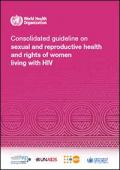
Resource | Guidelines,
There were an estimated 17.8 million women aged 15 and older living with HIV in 2015, constituting 51% of all adults living with HIV. Adolescent girls and young women are particularly affected; in 2015 they constituted 60% of young people aged 15–24 years who were living with HIV, and they also accounted for 58% of newly acquired HIV infections among young persons in that age group. In many countries, women living with HIV do not have equitable access to good-quality health services and are also faced with multiple and intersecting forms of stigma and discrimination. Furthermore, women living with HIV are disproportionately vulnerable to violence, including violations of their sexual and reproductive rights.
This guideline is meant to help countries to more effectively and efficiently plan, develop and monitor programmes and services that promote gender equality and human rights and hence are more acceptable and appropriate for women living with HIV, taking into account the national and local epidemiological context. It discusses implementation issues that health interventions and service delivery must address to achieve gender equality and support human rights.
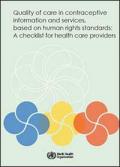
Resource | Publications,
Unmet need for contraception remains high in many settings, and is highest among the most vulnerable in society: adolescents, the poor, those living in rural areas and urban slums, people living with HIV, and internally displaced people. The latest estimates are that 225 million women have an unmet need for modern contraception, and the need is greatest where the risks of maternal mortality are highest.
This document presents a user friendly checklist specifically addressed to health care providers, at the primary health care level, who are involved in the direct provision of contraceptive information and services. It is complimentary to WHO guidelines on Ensuring human rights in the provision of contraceptive information and services: Guidance and recommendations, and the Implementation Guide published jointly with UNFPA in 2015. This checklist also builds on WHO vision document on Standards for Improving Quality of Care for Maternal and Newborn Care and its ongoing work under the Quality, Equity and Dignity initiative. The checklist should be read along with other guidance from WHO and also from partners.
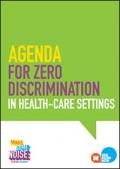
Resource | Publications,
There has been great progress in the response to HIV during the past decade. The world is one step closer to eliminating HIV infections among children, more people living with HIV know their status and are accessing HIV treatment and AIDS-related deaths are declining.
However, throughout the world, stigma, discrimination, exclusion and inequality continue to make people vulnerable to HIV and hinder their access to HIV prevention, treatment and care services.
People living with HIV, key populations and other vulnerable groups continue to face stigma, discrimination, criminalization and ill-treatment based on their actual or perceived health status, race, socioeconomic status, age, sex, sexual orientation or gender identity or other grounds. Discrimination and other human rights violations may occur in health-care settings, barring people from accessing health services or enjoying quality health care. Workers in health-care settings can also face discrimination from their co-workers and employers, or work in environments where their rights, roles and responsibilities cannot be fully exercised.






